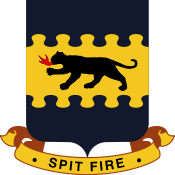Daniel James Jr.
| Daniel James Jr. | |
|---|---|
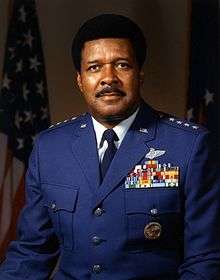 | |
| Nickname(s) | "Chappie" |
| Born |
February 11, 1920 Pensacola, Florida, U.S. |
| Died |
February 25, 1978 (aged 58) Colorado Springs, Colorado, U.S. |
| Buried | Arlington National Cemetery |
| Allegiance |
|
| Service/ |
|
| Years of service | 1943–1978 |
| Rank |
|
| Unit |
99th Pursuit Squadron 477th Bomb Group 67th Fighter Bomber Squadron 12th Fighter Bomber Squadron 44th Fighter Bomber Squadron 8th Tactical Fighter Wing |
| Commands held |
437th Fighter-Interceptor Squadron 92d Tactical Fighter Squadron 8th Tactical Fighter Wing 33rd Tactical Fighter Wing 7272nd Flying Training Wing Military Airlift Command North American Aerospace Defense Command |
| Battles/wars | |
| Awards |
Defense Distinguished Service Medal Air Force Distinguished Service Medal (2) Legion of Merit (2) Distinguished Flying Cross (3) Meritorious Service Medal Air Medal (14) |
Daniel "Chappie" James Jr. (February 11, 1920 – February 25, 1978) was an American fighter pilot in the U.S. Air Force, who in 1975 became the first African American to reach the rank of four-star General.
He attended the famous Tuskegee Institute and instructed African American pilots during World War II. He flew combat missions during the Korean War and Vietnam War, and received the Defense Distinguished Service Medal, two Air Force Distinguished Service Medals, two Legion of Merits, three Distinguished Flying Crosses, Meritorious Service Medal and fourteen Air Medals
Early life and education
Daniel James Jr. was born on February 11, 1920, to Daniel and Lillie Anna (Brown) James. Daniel James Sr. worked for the Pensacola city gas company, while his mother, Lillie Anna James, was a high school teacher who established a private school for her own and other black children in Pensacola, Florida.[1] His mother would continue to run the "Lillie A James School" until her death at the age of 82.[2] James graduated from the Tuskegee University in 1942, receiving a Bachelor of Science degree in physical education.[3]
Career
World War II
James continued civilian pilot training under the government-sponsored Civilian Pilot Training Program. He then enlisted in the Aviation Cadet Program of the U.S. Army Air Forces on January 18, 1943, receiving his commission as a 2d Lt and pilot wings at Tuskegee Army Airfield, Alabama, on July 28, 1943. He remained at Tuskegee as a civilian instructor pilot in the Army Air Corps later that July. Throughout the remainder of the war James trained pilots for the all-black 99th Pursuit Squadron.
After completing P-40 Warhawk training and then B-25 Mitchell training, James served as a B-25 pilot with the 617th Bomb Squadron of the 477th Bomb Group at Godman Army Airfield and then at Lockbourne Army Airfield from January 1944 till the end of the war.
Post war
While serving in Lockbourne, James next served as a P-47 Thunderbolt pilot with the 301st Fighter Squadron from July 1947 to October 1948, and then served as on the staff of the 332nd Air Base Group at Lockbourne from November 1948 to September 1949.
Korean War
In September 1949, James went to the Philippines as flight leader for the 12th Fighter-Bomber Squadron, 18th Fighter Wing at Clark Field. In July 1950 he left for Korea, where he flew 101 combat missions in P-51 Mustang and F-80 aircraft. He flew with combat missions with the 67th Fighter Bomber Squadron, 12th Fighter Bomber Squadron, and 44th Fighter Bomber Squadron in Korea.
Post war
James returned to the United States, and in July 1951 went to Otis Air Force Base, Massachusetts as an all-weather jet fighter pilot with the 58th Fighter-Interceptor Squadron, later becoming operations officer. In April 1953, he became commander of the 437th Fighter-Interceptor Squadron, and assumed command of the 60th Fighter-Interceptor Squadron in August 1955. While stationed at Otis, he received the Massachusetts Junior Chamber of Commerce 1954 award of "Young Man of the Year" for his outstanding community relations efforts. On August 15, 1954, he appeared as a contestant on the game show What's My Line? He graduated from the Air Command and Staff College in June 1957.
James next was assigned to Headquarters U.S. Air Force as a staff officer in the Air Defense Division of the Office of the Deputy Chief of Staff for Operations. In July 1960 he was transferred to RAF Bentwaters in England, where he served successively as assistant director of operations and then director of operations, 81st Tactical Fighter Wing; commander, 92nd Tactical Fighter Squadron; and deputy commander for operations for the 81st Wing. In September 1964, James was transferred to Davis-Monthan Air Force Base, Arizona, where he was director of operations training and later deputy commander for operations for the 4453rd Combat Crew Training Wing.
Vietnam War
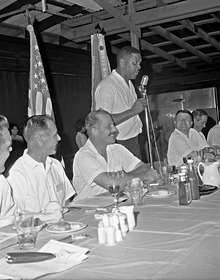
James went to Ubon Royal Thai Air Force Base, Thailand, in December 1966, as deputy commander for operations, 8th TFW. In June 1967, under Colonel Robin Olds, he was named wing vice commander when Col. Vermont Garrison completed his tour. Both in their mid-40s, they formed a legendary team nicknamed "Blackman and Robin." James flew 78 combat missions into North Vietnam, many in the Hanoi/Haiphong area, and led a flight in the "Operation Bolo" MiG sweep in which seven Communist MiG-21s were destroyed, the highest total kill of any mission during the Vietnam War.

Post war
He was named vice commander of the 33rd TFW at Eglin Air Force Base, Florida, in December 1967. While stationed at Eglin, the Florida State Jaycees named James as Florida's "Outstanding American of the Year" for 1969, and he received the Jaycee Distinguished Service Award. He was transferred to Wheelus Air Base in the Libyan Arab Republic in August 1969 as Commander of the 7272nd Fighter Training Wing.
Following the coup engineered by radical Libyan officers, including Mohammar Qaddafi, James had a tense standoff with the militants in the late stages of turning Wheelus over to the Libyans. James was determined not to be pushed off the base early, but Qaddafi and his followers began pushing the Americans to see how far they could go and at one point "ran a column of half-tracks through the base housing area at full speed". Following this escalation, James closed the gates of the base. Qaddafi arrived at the gate and while talking to James, moved his hand over to his pistol holster to which James replied: "I told him to move his hand away. If he had pulled that gun, his hand would have never cleared the holster."[6]
James became Deputy Assistant Secretary of Defense (Public Affairs) in March 1970 and was designated principal Deputy Assistant Secretary of Defense (Public Affairs) in April 1973. On September 1, 1974, he assumed duty as vice commander of the Military Airlift Command (MAC), headquartered at Scott Air Force Base, Illinois.
On September 1, 1975, James was promoted to the four-star rank of General (O-10) and assigned as commander in chief of NORAD/ADCOM at Peterson Air Force Base, Colorado. In these dual capacities he had operational command of all United States and Canadian strategic aerospace defense forces. On December 6, 1977, he assumed duty as special assistant to the Chief of Staff, U.S. Air Force.[7]
General James retired from the Air Force on January 31, 1978.
Political positions
General James was widely known for his speeches on Americanism and patriotism, for which he was editorialized in numerous national and international publications.
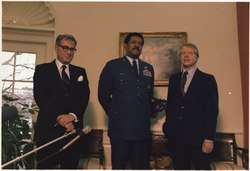
When asked his views on the growing Civil Rights Movement after having to make an emergency landing in North Vietnam, he answered, "Look, friend, I'm really not interested in all of that, really. See I consider myself damned lucky to have been able to land my airplane at this emergency strip in one piece." Being asked about militants like H. Rap Brown and Stokely Carmichael, who implied that blacks ought to fight at home rather than in Vietnam, also angered James, with him stating "...the lawlessness, rioting, men like Stokely Carmichael acting as if they speak for the Negro people. They aren't, and set civil rights back 100 years!" James even removed his Black Panther emblem from his helmet since it had become associated with a movement he no longer identified with. Excerpts from some of the speeches have been read into the Congressional Record.[7]
The statements by James in which he repudiated the most militant point of view endeared him to concerned whites, including President Johnson, who invited him to a White House reception. Immediately after the murder of Dr. Martin Luther King Jr., and as riots erupted in several areas across the country, James addressed a gathering of Air Force Association officers at which he declared that in spite of events and the resistance to progress, "I'm not disgusted-I'm a citizen of the United States of America and I'm no second-class citizen either and no man here is, unless he thinks like one and reasons like one and performs like one. This is my country and I believe in her, and I will serve her, and I'll contribute to her welfare whenever and however I can. If she has any ills, I'll stand by her until in God's given time, through her wisdom and her consideration for the welfare of the entire nation, she will put them right."[7]
He was awarded the George Washington Freedom Foundation Medal in both 1967 and 1968. He received the Arnold Air Society Eugene M. Zuckert Award in 1970 for outstanding contributions to Air Force professionalism. His citation read "... fighter pilot with a magnificent record, public speaker, and eloquent spokesman for the American Dream we so rarely achieve."[7]
Retirement and death
General James died of a heart attack on February 25, 1978, just two weeks after his 58th birthday and three weeks following his retirement from the Air Force. An earlier heart attack had forced his retirement. He was buried with full military honors at Arlington National Cemetery.
He was survived by his wife, Dorothy Watkins James, their daughter, Danice Berry, and two sons, Daniel James III and Claude James.[3] His wife Dorothy died in 2000 and is buried with him in Arlington.
Honors and awards
General James' military awards include the following –
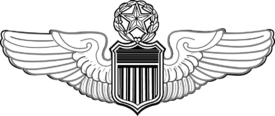 | ||
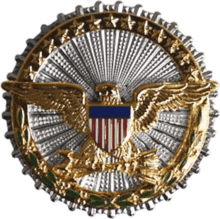 | ||
| Office of the Secretary of Defense Identification Badge | ||
The civilian awards that General James received included the following:
Builders of a Greater Arizona Award (1969); Phoenix Urban League Man of the Year Award, Distinguished Service Achievement Award from Kappa Alpha Psi Fraternity (1970); American Legion National Commander's Public Relations Award, Veteran of Foreign Wars Commander in Chief's Gold Medal Award and Citation (1971); Capital Press Club, Washington, D.C., Salute to Black Pioneers Award (1975); and, all in 1976, the Air Force Association Jimmy Doolittle Chapter Man of the Year Award, Florida Association of Broadcasters' Gold Medal Award, American Veterans of World War II Silver Helmet Award, United Service Organization Liberty Bell Award, Blackbook Minority Business and Reference Guidance Par Excellence Award, American Academy of Achievement Golden Plate Award, United Negro College Fund's Distinguished Service Award, Horatio Alger Award, VFW Americanism Medal, Bishop Wright Air Industry Award, and the Kitty Hawk Award (Military).
He was awarded honorary doctor of laws degrees from the University of West Florida in 1971; the University of Akron in 1973; Virginia State College in 1974; Delaware State College in 1975; and St. Louis University in 1976. He was named honorary national commander of the Arnold Air Society in 1971.
Family

General James met his wife Dorothy while he was at Tuskegee Institute and they were married on the campus on November 3, 1942.[8] They had two sons and one daughter.[9] General James's son, Lieutenant General Daniel James III,[10] also served in the United States Air Force as a fighter pilot and in the Texas Air National Guard. He served from 1995 to 2002 as the Adjutant General of the Texas National Guard (the first African American to hold the post), and as Director of the Air National Guard from 2002 to 2006. In the summer of 2006, he retired from the Air Force at the rank of Lieutenant General after 38 years of total commissioned service, on active duty and as an Air Guardsman.
Legacy
A Lockheed F-94 Starfire (tail number 51-4335) is on display at Camp Edwards, near Otis Air National Guard Base (formerly Otis Air Force Base), in Massachusetts with General James' name written under the cockpit. This plane commemorates General James' service with the 58th Fighter-Interceptor Squadron at Otis Air Force Base in the mid-1950s.
The James Sports Center at Scott AFB, Illinois, is named after General James and there is plaque that was dedicated on February 12, 1979.
The character of Colonel Charles "Chappy" Sinclair in the Iron Eagle movies was inspired by the life of General Daniel "Chappie" James Jr.
See also
References
- ↑ U.S. Census, 1930, enumerator district 17-23, supervisor's district 1, sheet 5B
- ↑ Grier, Peter (October/November 2018). "The Chappie James Way". Air Force Magazine: 71. Check date values in:
|date=(help) - 1 2 Treaster, Joseph E. (February 26, 1978). "Daniel James, First Black to Be a Full General, Dies; Arrested for Sit-In Statement of Brown". The New York Times. Retrieved July 4, 2017.
- ↑ "Factsheets : Gen. Daniel "Chappie" James Jr". www.nationalmuseum.af.mil. Archived from the original on 2008-09-25. Retrieved 2010-02-17.
- ↑ "Daniel ("Chappie")James Jr". www.airpower.maxwell.af.mil. Retrieved 2010-02-17.
- ↑ Grier, Peter (October/November 2018). "The Chappie James Way". Air Force Magazine: 70-73. Check date values in:
|date=(help) - 1 2 3 4 Astor, Gerald The Right to Fight: A History of African Americans in The Military, 1998, De Capo Press, pp. 440–443
- ↑ "James, General Daniel "Chappie" Jr. (1920–1978) – The Black Past: Remembered and Reclaimed".
- ↑ "Daniel Chappie James, General, United States Air Force".
- ↑ "AF.mil". Archived from the original on 2009-08-09.
Further reading
- Bracey, Earnest N. (2003). Daniel "Chappie" James: The First African American Four Star General. McFarland. ISBN 9780786451265.
- McGovern, James R. (2002). Black Eagle: General Daniel "Chappie" James, Jr. University of Alabama Press. ISBN 9780817313074.
- Phelps, J. Alfred (1992). Chappie: America's First Black Four-star General : the Life and Times of Daniel James, Jr. Presidio. ISBN 9780891414643.
- Earnest Norton Bracey (1999). "Higher than the Eagle: The Legacy of General Daniel "Chappie" James Jr.". In Conyers, James L. Black Lives: Essays in African American Biography. M.E. Sharpe. ISBN 9780765603296.
External links
| Wikiquote has quotations related to: Daniel James Jr. |
- Profile on James
- Information on James
- GEN Daniel "Chappie" James, Jr at Find a Grave
- Daniel "Chappie" James, General – Arlington National Cemetery
- Official biography official USAF site – AF.mil
- Chappie James Suite from The Airmen of Note album "Brothers in Blue"
.jpg)
